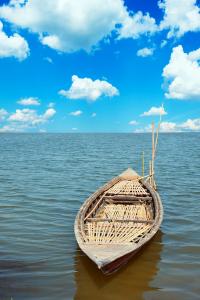Looking for design inspiration? Browse our curated collections!
April 28th, 2017 - 04:34 AM

The Brahmaputra (/ňĆbr…Ďňźm…ôňąpuňźtr…ô/ [br…Ēmm…ĒputŐ™r…Ē n…ĒdŐ™i] is one of the major rivers of Asia, a trans-boundary river which flows through China, India and Bangladesh. As such, it is known by various names in the region. In Assamese: ŗ¶¨ŗßćŗßįŗ¶Ļŗßćŗ¶ģŗ¶™ŗßĀŗ¶§ŗßćŗßį ŗ¶®ŗ¶¶ (Male River), Br√•hm√•putr√•; Sanskrit: ŗ§¨ŗ•ćŗ§įŗ§Ļŗ•ćŗ§ģŗ§™ŗ•Āŗ§§ŗ•ćŗ§į, IAST: Brahmaputra; Tibetan: ŗľč, Wylie: yar klung gtsang po Yarlung Tsangpo; simplified Chinese: ŚłÉśčČť©¨śôģÁČĻśčČś≤≥; traditional Chinese: ŚłÉśčČť¶¨śôģÁČĻśčČś≤≥; pinyin: B√ĻlńĀm«ép«Ēt√®lńĀ H√©. It is also called Tsangpo-Brahaputra (when referring to the whole river including the stretch within Tibet),[3] and the Jamuna River in Bangladesh. The Manas River that runs through Bhutan joins it at Jogighopa, in India. It is the tenth largest river in the world by discharge and the 29th longest.
With its origin in the Angsi glacier, located on the northern side of the Himalayas in Burang County of Tibet as the Yarlung Tsangpo River, it flows across southern Tibet to break through the Himalayas in great gorges (including the Yarlung Tsangpo Grand Canyon) and into Arunachal Pradesh (India), where it is known as Dihang or Siang. It flows southwest through the Assam Valley as Brahmaputra and south through Bangladesh as the Jamuna (not to be mistaken with Yamuna of India). In the vast Ganga Delta, it merges with the Padma, the popular name of the river Ganga in Bangladesh, and finally the Meghna and from here it is known as Meghna before emptying into the Bay of Bengal.
About 1,800 mi (2,900 km) long, the Brahmaputra is an important river for irrigation and transportation. The average depth of the river is 124 ft (38 m) and maximum depth is 380 ft (120 m). The river is prone to catastrophic flooding in spring when the Himalayan snows melt. The average discharge of the river is about 19,800 m3/s (700,000 cu ft/s),[4] and floods can reach over 100,000 m3/s (3,500,000 cu ft/s). It is a classic example of a braided river and is highly susceptible to channel migration and avulsion. It is also one of the few rivers in the world that exhibit a tidal bore. It is navigable for most of its length.
The river drains the Himalaya east of the Indo-Nepal border, south-central portion of the Tibetan plateau above the Ganga basin, south-eastern portion of Tibet, the Patkai-Bum hills, the northern slopes of the Meghalaya hills, the Assam plains, and the northern portion of Bangladesh. The basin, especially south of Tibet, is characterized by high levels of rainfall. Kangchenjunga (8,586 m) is the only peak above 8,000 m, hence is the highest point within the Brahmaputra basin.
The Brahmaputra's upper course was long unknown, and its identity with the Yarlung Tsangpo was only established by exploration in 1884‚Äď86. This river is often called Tsangpo-Brahmaputra river.
The lower reaches are sacred to Hindus. While most rivers on the Indian subcontinent have female names, this river has a rare male name, as it means "son of Brahma" in Sanskrit (putra means "son").
Assam govt is set to celebrate the pristine beauty of the mighty river as "Namami Brahmaputra"- the event will be organised across 21 districts of Assam from 31 March to April 4 2017.
source : Wikipedia
Comments
There are no comments on this blog. Click here to post the first comment.